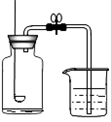Would you like to experience what going to school was like in the late 1800s? to start with, imagine everyone in school only one classroom.
In the 19th and early 20th centuries, most American students went to a one-room schoolhouse. A single teacher would typically(典型地) have students in the first through eighth grades, and she taught them all. The number of students varied from six to 40 or more. The youngest children sat in the front, while the oldest students sat in the back. The teacher usually taught reading, writing, arithmetic, history, and geography. Students memorized(记忆) and retold their lessons.
The classroom of a one-room schoolhouse probably looked much like your own. The teacher’s desk stood on a raised platform(讲台) at the front of the room, however, and there was a wood-burning stove since there was no other way of heating. The bathroom was outside in an outhouse.
In Honeoye Falls, New York, there is a one-room schoolhouse where kids today can experience what it was like to the students in the late 19th century. For a week during the summer, they wear 19th century clothes and learn the way children learned more than a hundred years ago.
What else has changed about school since the 19th century? For more information, please visit our website: www. Locallygacy.com.
小题1: What does the word “varied” in the Paragraph Two mean in Chinese?
A.变化
B.排列
C.调整
D.减少小题2: Students in the late 19th century could learn_____?
A.reading, writing, sports, history, and science.
B.reading, art, arithmetic, history, and geography
C.reading, writing, arithmetic, history, and geography
D.reading, physics, chemistry, history, and geography小题3:Which of the following best shows what a one-room schoolhouse was like in the late 19th century?
A.
B.
C.
D. 小题4:Some kids go to Honeoye Falls to _____.
小题4:Some kids go to Honeoye Falls to _____.
A.try the food in the late 19th century
B.learn the subjects over a century ago
C.memorized and retell their lessons they have learn
D.experience the way children learned over a century ago小题5:Which of the following is TRUE about the students in a one-room schoolhouse?
A.They had only one teacher.
B.They had different classrooms.
C.They could choose the seats they liked.
D.They learned more subjects than we do now.

 五氧化二磷;
五氧化二磷;



 小题4:Some kids go to Honeoye Falls to _____.
小题4:Some kids go to Honeoye Falls to _____.